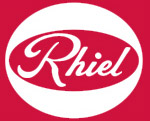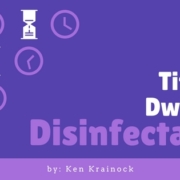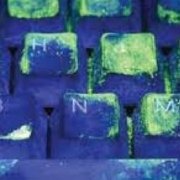It’s Time to Dwell on Disinfectants
True or false? My disinfecting wipes leave my surfaces safe and disinfected immediately after use? …False. In fact, unless you used the wipes to keep the surface visibly wet for somewhere around 5 to 10 minutes then you really haven’t disinfected at all! Let’s dive into this subject a little deeper because the health of your facility depends on it.
Choosing the right disinfectant to use and applying it properly is a critical step in the cleaning process. Important information regarding dwell times and kill claims can be found on the product’s label. These label instructions will provide your staff with explicit information on how to properly use the product. But what are kill claims and dwell times? Helping your staff understand these important key terms will go a long way in assisting them to do their jobs well and ensure proper application of a disinfectant.
A dwell time is the contact time the disinfectant is required to remain on the target surface to effectively kill bacteria and germs. Each disinfectant will have a manufacturer’s recommended dwell time; these times may vary and must be followed closely for the product to perform effectively. These dwell times are established through various 3rd party EPA labs and may differ based on the target pathogen and specific product being tested.
Professionals are less likely to follow the instructed dwell time, especially if they are pressed for time. So, although the stress of janitorial work can be overwhelming, following the requirements of the disinfectant is a crucial part of cleaning for health. If the disinfectant isn’t left on the surface for the suggested contact time, the pathogens on the target surface are less likely to be killed, leaving customers, employees, staff, students, etc. susceptible to infections and illnesses.
Additionally, disinfectants should only be used when needed. The CDC explains that some microorganisms have an innate resistance to certain disinfectants. To ensure the safety of your cleaning team, your staff, the environment, and the efficacy of the product, be sure that your team is using these products only when needed and as recommended. Dwell time affects kill claims, kill claims are the key to a successful disinfecting program.
Kill claims are a list of the microscopic organisms (bacteria, viruses, and fungi) that each disinfectant is effective at eliminating. These lists are provided on the label of every disinfectant on the market. Additionally, most disinfectants have an Environmental Protection Agency (EPA) registration number. This number, in combination with the EPA establishment number, indicates that a disinfectant has been proven effective, with a minimal risk to the user.
Every disinfectant is different and the labels are there to indicate which microscopic organism they can kill. For example, disinfectants can kill TB (tuberculosis) bacterium, H1N1 Influenza A virus, MRSA (methicillin-resistant Staphylococcus aureus), and other pathogens. However, the disinfectant that kills MRSA may not work against the TB bacterium. Although this may not always be the case, it demonstrates the importance of selecting the proper disinfectant that is effective against the particular pathogen you want to kill.
Improperly used disinfectants are ineffective, so it’s important to ensure your staff understands the label instructions before applying the product to any affected surface. This will ensure that the job is completed in a safe and effective manner.
For more detailed information about our recommended disinfectants, contact us at Rhiel Innovative Solutions.













